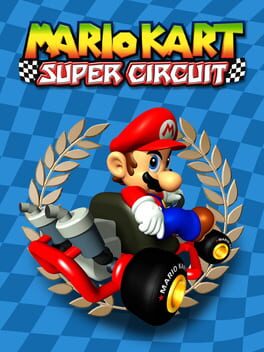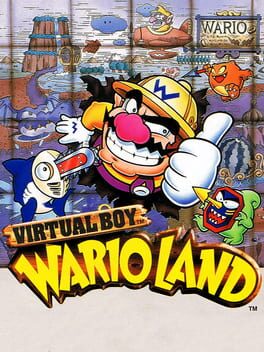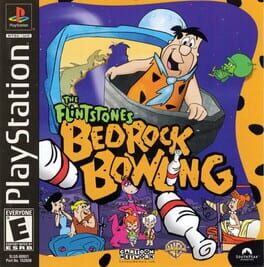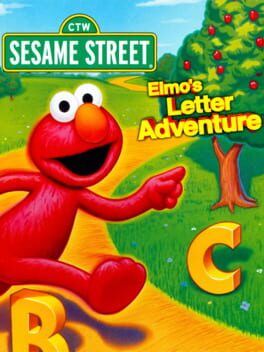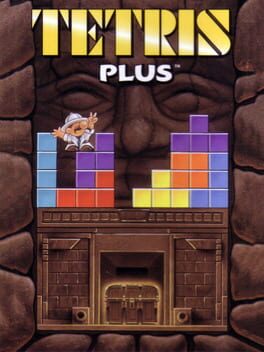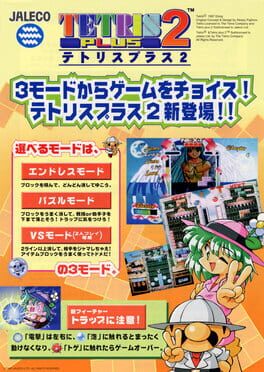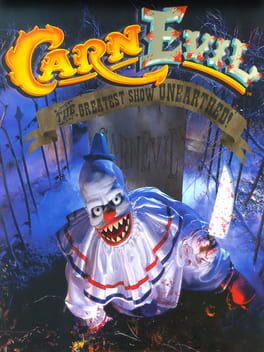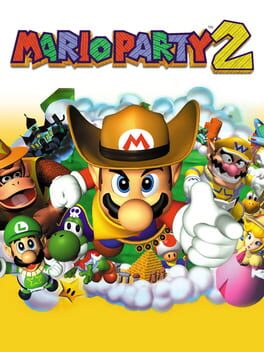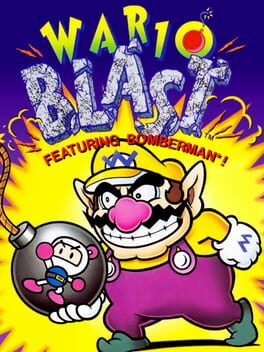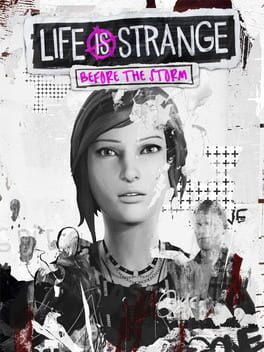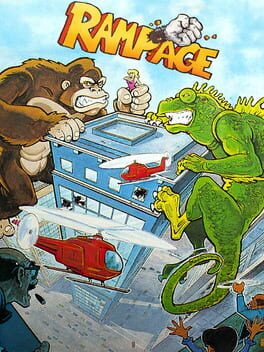MacBlank
Not... very good. It's respectably ambitious for what it is, trying to capture both Super Mario Kart and Mario Kart 64 on handheld. Controls are so slippery - don't think I've ever leaned so much on hopping and breaking just to make a normal turn, on top of only being able to win as a heavyweight when I usually play as lightweights. The game is arbitrarily mean about high-end completion, down to punishing players for picking better characters.
For a casual playthrough, though, it's fine enough. There's better mobile options for Mario Kart now, but in 2001, it'd do
For a casual playthrough, though, it's fine enough. There's better mobile options for Mario Kart now, but in 2001, it'd do
Hey, not bad. You could actually do pretty impressive visuals on the Virtual Boy; color palette's limited, yes, but the spritework's impressively expressive. The game's levels show nice variation between aesthetics and layout, and the two mid-bosses are fun tech showcases (final boss kinda sux). Kinda short for what it is, though given it's Virtual Boy, that may be for the best.
A friend brought it to a group hang-out. We had a bunch of more obvious picks for party games, but I wasn't gonna let this pass us up.
Elmo's Letter Adventure is a simple edutainment game with a very narrow scope: reading comprehension by learning and recognizing letters. Gameplay consists of moving around environments and pressing a button near letters of an opposite case as the one given. After you find all the letters, you move on to the second stage, which does the same thing with the same letter. After that, you find letters to complete words' spelling. Repeat this cycle three times, and the game is over.
I don't object to having a narrow scope for teaching, as there's often a lot you can do within that narrow scope. But Elmo's Letter Adventure isn't doing much within that framework. If we break the game down into three sequences of three stages, a full two thirds of the game isn't even concerned with what you're doing with letters, just rote memorization of what they look like. Now, I don't know Sesame Street very well, but I know that a big part of how it teaches numbers and letters is through scenarios involving character interplay, surrealism, or humor. This has the benefit of (1) presenting the material in a memorable context, (2) teaching application of the material, and (3) being fun. I think that's what they're going for here with each set of levels being based around a different type of adventure (visiting the farm, going to space, an underWATER adventure), but the game doesn't do anything with those; mechanically, there's no difference between hopping on a pogo stick, driving a moon buggy, and piloting a submarine. About the strongest moment of teaching comes when you're looking for letters to start words, where you can accidentally spell the wrong words by picking the wrong letters, but these sequences are over and done with too quickly, they disincentivise this learning through a limited try system (overly-lenient as it is), and they're not even uniquely themed across all three level sets. And you don't have nearly enough gameplay to get through all the letters!
I know this is a game for 3-year-olds, but there's so much more you can do with games for 3-year-olds than this.
Elmo's Letter Adventure is a simple edutainment game with a very narrow scope: reading comprehension by learning and recognizing letters. Gameplay consists of moving around environments and pressing a button near letters of an opposite case as the one given. After you find all the letters, you move on to the second stage, which does the same thing with the same letter. After that, you find letters to complete words' spelling. Repeat this cycle three times, and the game is over.
I don't object to having a narrow scope for teaching, as there's often a lot you can do within that narrow scope. But Elmo's Letter Adventure isn't doing much within that framework. If we break the game down into three sequences of three stages, a full two thirds of the game isn't even concerned with what you're doing with letters, just rote memorization of what they look like. Now, I don't know Sesame Street very well, but I know that a big part of how it teaches numbers and letters is through scenarios involving character interplay, surrealism, or humor. This has the benefit of (1) presenting the material in a memorable context, (2) teaching application of the material, and (3) being fun. I think that's what they're going for here with each set of levels being based around a different type of adventure (visiting the farm, going to space, an underWATER adventure), but the game doesn't do anything with those; mechanically, there's no difference between hopping on a pogo stick, driving a moon buggy, and piloting a submarine. About the strongest moment of teaching comes when you're looking for letters to start words, where you can accidentally spell the wrong words by picking the wrong letters, but these sequences are over and done with too quickly, they disincentivise this learning through a limited try system (overly-lenient as it is), and they're not even uniquely themed across all three level sets. And you don't have nearly enough gameplay to get through all the letters!
I know this is a game for 3-year-olds, but there's so much more you can do with games for 3-year-olds than this.
1995
Focused on Puzzle/Challenge mode for this playthrough.
Interesting modifier for Tetris, turning it into a weird escort mission. You've lost the purity of Tetris, instead turning it into a series of puzzle stages that happen to feature tetrominoes, but what you have in its place isn't bad. The professor's AI makes for interesting timing challenges on whether or not to quickly drop blocks.
Interesting modifier for Tetris, turning it into a weird escort mission. You've lost the purity of Tetris, instead turning it into a series of puzzle stages that happen to feature tetrominoes, but what you have in its place isn't bad. The professor's AI makes for interesting timing challenges on whether or not to quickly drop blocks.
1997
Focused on Puzzle/Challenge mode here.
About on-par with the prequel for me, so see my notes there. The Assistant being more energetic and taller makes her a cute challenge option over the Professor. I also like the branching path structure, always neat to see in an arcade game. Don't think any of these things significantly elevate the game for me, but it's not bad.
About on-par with the prequel for me, so see my notes there. The Assistant being more energetic and taller makes her a cute challenge option over the Professor. I also like the branching path structure, always neat to see in an arcade game. Don't think any of these things significantly elevate the game for me, but it's not bad.
1998
I kind of think evil clowns/circus/etc is all overdone, but if you're looking for something in that vein, this is a pretty fun take. Gunplay is super basic, but it works well - being able to reload without having to point the gun off-screen is super helpful in situations where you want to keep unloading into the enemy, like in bosses or horde encounters. Power-ups are fun modifiers, though they're over and done with way too quickly to feel like there's any strategy to using them. It's also respectably short - fewer but longer levels makes for a solid balance.
Occasionally the game veers into sneaky quarter-munching territory, like how it punishes shooting the hostage or Evil Marie. Also, holy crap does your trigger finger get tired after a while. I also don't like the look of the game and bad guys (Umlaut notwithstanding, he's fun). But it's not bad.
Occasionally the game veers into sneaky quarter-munching territory, like how it punishes shooting the hostage or Evil Marie. Also, holy crap does your trigger finger get tired after a while. I also don't like the look of the game and bad guys (Umlaut notwithstanding, he's fun). But it's not bad.
1999
Oh heck yeah. I am not at all good at Mario Party 2, as is documented in the Tarvould's Quest Mario Party League. But I'm all right with that. So much of the heart of what makes Mario Party good really hits its stride in the second game. Great board design, great mini-games (many of which are salvaged from the first game, true, but they're uniformly improved here), fun item balance, ample opportunity for inter-player politics... I don't know that I'll ever have the patience or interest in becoming good at a Mario Party, but I am very happy to return to this one as a favorite among friends.
Most of my issues with the game come in retrospect: one item allows for less strategy than three items, more interesting items are waiting a little further down the series, more characters are generally more fun, etc. But what's here, especially for its placement in the series, is really damn strong.
Most of my issues with the game come in retrospect: one item allows for less strategy than three items, more interesting items are waiting a little further down the series, more characters are generally more fun, etc. But what's here, especially for its placement in the series, is really damn strong.
Adding Wario to this Bomberman game was the right move marketing-wise, because there's so little else going on with this title.
I'm no RifeXD, so take my Bomberman opinions with a grain of salt. As a pure Bomberman game, it's fine if extremely basic. I like some of the upgrades; making a motorcycle sprite specifically as a run function is fun, and hopping over walls leads to some strategy. But it's otherwise a string of very similar and repetitive fights with little variation, punctuated by utterly miserable boss fights. The Mad-Bomber in particular is such a mean wall, only somewhat justified by its status as the final boss. A good third of my playtime went to trying to beat it.
I guess if this is your only Bomberman, it'll do, but I don't doubt you can do so much better than this.
I'm no RifeXD, so take my Bomberman opinions with a grain of salt. As a pure Bomberman game, it's fine if extremely basic. I like some of the upgrades; making a motorcycle sprite specifically as a run function is fun, and hopping over walls leads to some strategy. But it's otherwise a string of very similar and repetitive fights with little variation, punctuated by utterly miserable boss fights. The Mad-Bomber in particular is such a mean wall, only somewhat justified by its status as the final boss. A good third of my playtime went to trying to beat it.
I guess if this is your only Bomberman, it'll do, but I don't doubt you can do so much better than this.
2015
Life is Strange is a game I adore for a lot of reasons that are hard to pin down. Part of it is how much Max as a protagonist resonates with me (awkward, timid, a pretty good student who struggles to apply herself, an absolute turbo nerd whose bravado mostly exists in her head). Part of it is that it came out at the last possible moment for it to feel relevant to me, a sort of send-off to my long and often lonely academic career. Part of it is its nature as a late episodic adventure game; DON'T NOD and later Deck Nine were some of the last studios to try their hand at a template that was on its way out. Part of it is of course the high concept of using time travel to freely second-guess your own choices, a great mechanical characterization of insecurity and indecisiveness. All of these are good reasons, but I don't know which among these is the main one, or if it's something else. Chloe Price? Kate Marsh? Syd Matters?
The truth is, it's a game that felt like little else I've played before. I can't quite articulate what the game makes me feel, just that there's such an authenticity and sincerity to it all that, even 8 years from the fact, occasionally makes me stop and wonder.
You can clearly tell that DON'T NOD ran out of money with Episode 5. The ride up to it is great, and Episode 5 has poignant moments amid everything else, but man, it really needed stronger connective tissue to get where it was going. Still worth playing, though.
The truth is, it's a game that felt like little else I've played before. I can't quite articulate what the game makes me feel, just that there's such an authenticity and sincerity to it all that, even 8 years from the fact, occasionally makes me stop and wonder.
You can clearly tell that DON'T NOD ran out of money with Episode 5. The ride up to it is great, and Episode 5 has poignant moments amid everything else, but man, it really needed stronger connective tissue to get where it was going. Still worth playing, though.
It didn't resonate with me as much as the original, though I think that's mostly down to my relating more with Max than Chloe. I actually think a lot is improved from the first game; Deck Nine better "gets" what makes this universe work compared to DON'T NOD, from the little character moments (oh my gosh everything with Steph is great) to the big emotional set pieces (even if "The Tempest" is a bit on-the-nose). Yes, Backtalk is obviously a far less compelling mechanic than Rewind, but it's a fine alternative. Sort of fun to look at it from a series perspective: you have all these main characters with larger-than-life abilities that act as extensions of their personalities, then you have some lesbian punk drop-out whose superpower is that she gets mad sometimes.
I will admit, I don't entirely see Chloe and Rachel's relationship, at least in the scope of this game. Chloe, I get - she so needs ANYONE to relate to her, I could see her falling hard for the first person to reciprocate those feelings (we see a lot of that desperation's aged into hostility by the time of LiS1). I don't quite get what Rachel sees in Chloe, or at least what'd have them go from relative strangers to deeeeeep lovers only partway into the game. I think everything else would've worked just fine for me if I'd played Before the Storm first, but I would've had to take as given that Chloe and Rachel end up together. But maybe I'm just missing some nuance.
Runaway funniest character between the first two games: prequel Victoria. Could not get enough of her in this game.
I will admit, I don't entirely see Chloe and Rachel's relationship, at least in the scope of this game. Chloe, I get - she so needs ANYONE to relate to her, I could see her falling hard for the first person to reciprocate those feelings (we see a lot of that desperation's aged into hostility by the time of LiS1). I don't quite get what Rachel sees in Chloe, or at least what'd have them go from relative strangers to deeeeeep lovers only partway into the game. I think everything else would've worked just fine for me if I'd played Before the Storm first, but I would've had to take as given that Chloe and Rachel end up together. But maybe I'm just missing some nuance.
Runaway funniest character between the first two games: prequel Victoria. Could not get enough of her in this game.
1986
One of those games that gives you less the more time you sink into it. The core gameplay loop is solid enough, but by Day 5, you have a feel for the game's controls, and around Day 30, you've taken on about everything the game has to offer. There are 128 Days. Running through in free play, it took me 3 hours, an impossibly long time for an arcade game. Multiplayer probably helps extend that playtime a good deal, but even with three-player, I can't imagine this game has enough content to warrant its long, long runtime. I say this as someone who has a lot of nostalgia for the weirdly mellow vibe you get after a couple dozen singleplayer levels of quietly leveling skyscrapers.
It's a solid enough play if all you want is to run out a couple credits, but don't go for completion. The reward on the final stage isn't worth it.
It's a solid enough play if all you want is to run out a couple credits, but don't go for completion. The reward on the final stage isn't worth it.
1997
I don't think I like this one as much as the original, but it's hard to argue that it's not an overall improvement. More robust movesets, power-ups, stronger animation, varied environments, more enemies, and lots of fun little interactions make this a more engaging playthrough, even if it is about as interminably long (129 Days this time). I like the end-of-level rating system, and I have to imagine that gives multiplayer a fun competitive lean.
There are a few key downsides, though. First is the ability to punch adjacent buildings. Since you can only focus on one building at a time, you lose a lot of the original's strategy. Second, lives don't last you nearly as long. This mostly comes down to far, far more aggressive and powerful enemies chewing through your lives. I shudder to think how much it would've cost me if I hadn't done this in free play. Third, more subjectively, I don't really like the visuals. I know this is the direction the series takes from here on out, but I've always liked the more classic designs than these Xeriouxly Forxe takes on the characters. Oh well. You also lose the more mellow vibe of the original, but you probably don't want that as the tone of your kaiju brawler.
Also, it ends on a boob joke. If you were a pubescent, so-inclined kid in '97, was it worth it?
There are a few key downsides, though. First is the ability to punch adjacent buildings. Since you can only focus on one building at a time, you lose a lot of the original's strategy. Second, lives don't last you nearly as long. This mostly comes down to far, far more aggressive and powerful enemies chewing through your lives. I shudder to think how much it would've cost me if I hadn't done this in free play. Third, more subjectively, I don't really like the visuals. I know this is the direction the series takes from here on out, but I've always liked the more classic designs than these Xeriouxly Forxe takes on the characters. Oh well. You also lose the more mellow vibe of the original, but you probably don't want that as the tone of your kaiju brawler.
Also, it ends on a boob joke. If you were a pubescent, so-inclined kid in '97, was it worth it?
2005
Lovely, understated game that gets better the more time you spend with it. I love its willingness to tackle complicated, very real subject matter with its silly characters. Everything's softened with humor, but it feels no less real for the ideas that are being communicated. I get why Chibi-Robo has the complicated, unfocused legacy it does as a series - it's hard to sell the game on its action or proper gameplay loop, but it also wouldn't feel complete as a pure visual novel or TV show. So much of this game and its quiet exploration feels like a reflection of the types of things you think about as a kid growing up in a suburban home. What you see, what you don't see, and what you're left thinking about in the quiet moments on your own...
I understand this was pretty impressive back in the day, especially in a tricked-out full ride/cabinet. I just thought this was a'ight myself. Some odd decisions were made here as an adaptation of Lost World (the entire third act of the movie is left out!), but knowing that the game was made with an early version of the script, some things fall into place. I think I like the ideas of some of the more unique things - like one player being grabbed and the other player having to save them, or shooting a number pad, or having to shoot sauropod feet to avoid getting squashed - more than I do the actual execution. But I do like that that experimentation exists, and as a lightgun game overall, it's pretty rock solid.
